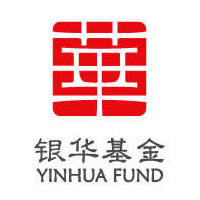The world’s most successful ETF launches the past year have been Chinese.
China’s ETF market clocked in 25% asset growth in H1 of 2019, to hit US$69 billion.
The unprecedented bump owed partly to Xi Jinping’s reforms to state owned enterprises, and ETFs that track their reformation.
The two primary culprits were the ChinaAMC CSI Central-SOEs’ Structural Reform ETF (512950), and the Bosera CSI Central-SOEs’ Structural Reform ETF (512960).
Despite both funds listing late-2018, they now each hold US$2.3 billion and US$3.3 billion respectively.
The unprecedentedly rapid growth owes to both funds being fully subscribed by institutional investors.
SOE reform has been going on for decades. But since Xi Jinping took office in 2013, reform has hit a qualitative shift.
The rationale for Xi’s reforms is to transfer part ownerships of SOEs to private hands in order to increase competitiveness, productivity, and efficiency.
According to Development Research Center of the State Council, 2018 was an important year for the reform in terms of “unleashing the profits” from SOEs.
To supplement the initiative, the financial regulator awarded three managers China AMC, Bosera, Yinhua to launch the country’s first SOE reform ETFs.
The products allow individual investors to take advantage of the structure changes.
Further product diversification
The country’s financial authorities are also stepping up to facilitate ETF product diversification.
In March, the Shanghai Stock Exchange and the Shanghai Futures Exchange selected eight fund managers to issue the country’s first crude oil ETFs. The bourses will licence the related index to two of the managers, although they have yet to announce the schedule for the product launch.
“Currently, the country’s financial market only has Qualified Domestic Institutional Investor (QDII) mutual funds that invest in overseas crude oil funds and natural gas indexes. The availability of crude oil future ETF will help provide more options for investors,” a senior analyst of Shanghai Securities says.
QDII is a cross-border scheme, which allows investors in China to invest in offshore markets such as securities and bonds.
As for market competition, the major market shares are still controlled by several large ETF managers. Top players such as China AMC, E Fund Management, China Southern Asset Management, Harvest Fund Management and HuaAn Asset Management have controlled significant shares.
“The industry landscape is expected to further consolidate going forward,” the analyst adds. “Large players will have better first-mover advantage and strength in distribution network especially when they come to vying for business in homogeneous products.”
For small-sized managers, the analyst expects they would rather launch the ETFs featured with lesser-known benchmarks or specific exposures in order to differentiate their offerings from rivals.
For example, Shanghai-based manager AXA SPDB Investment has recently launched an ETF tracking high dividend companies in the China Securities Index, she adds.
Japan-China Stock Connect
Meanwhile, the China-Japan ETF Connectivity, a cross-border ETF trading scheme launched on June 25, has been gaining market popularity in China.
Under the scheme, ETF managers in both countries pair up to each develop a feeder ETF that invests primarily in the other partner’s fund. There were eight ETF managers in the inaugural batch, four each from China and Japan.
The first batch of Chinese participants are China AMC, E Fund Management, China Southern Asset Management, and HauAn Fund Management. Each of them listed an ETF on the Shanghai Stock Exchange that feeds into the funds of their Japanese partners.
The Japanese participants are Mitsubishi UFJ Kokusai Asset Management, Nikko Asset Management, Asset Management One, and Nomura Asset Management. Their funds were listed on the Tokyo Stock Exchange.
The four funds launched by the Chinese managers raised a total 604 million RMB (US$88 million) as of end-June.
“The size of total fundraising is not very large compared with some thematic ETFs in China recently, but the programme is an important step for the opening up of the country’s capital market,” the analyst points out.
The scheme will deepen the local stock market, which will benefit investors in the long term, she adds.





